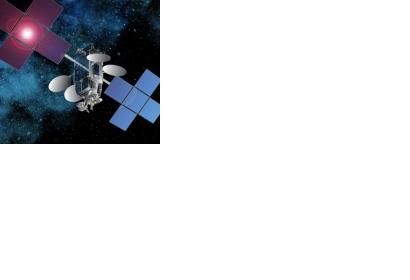As the interoperability discussion continues, so does the frustration of many who have worked on this issue for decades but haven’t seen their goals realized. So it makes sense to take a look into the future of what could be bright spot, given the right circumstances, some money and a will to make it work. Satellite technology has proven itself during major events but its limitations are known. During Hurricane Katrina, satellite technology allowed for some semblance of interoperability when most communications systems were down, including allowing the U.S. Department of Veterans Affairs medical centers to provide connections for veterans and order medications. As useful as satellite communications can be, it’s limited by a necessity for a clear line of site and spot beam capacity. It also is susceptible to heavy rains.
A new satellite launched three years ago by Hughes has the ability to be a “game changer,” in the words of some neutral panelists at a recent emergency management summit. The new satellite, which Hughes calls Spaceway, offers path diversity. It doesn’t just bounce up from an antenna to the satellite and reflect down to a ground hub and connect to the Internet or a data center like the traditional satellite. The Spaceway is a router in the sky that can make multiple connections at once, enabling conference calls and video conferencing. The Department of Defense tested the satellite’s ability in 2009, creating video teleconferencing between the U.S. Northern Command, the Naval Surface Warfare Center’s Dahlgren Division and the Space and Naval Warfare Systems Center in San Diego. The after-action report described it as “relatively quick to set up with the ability to carry on high-definition, clear and stable communications with other locations.” FEMA was scheduled to test it during winter 2011.
With the Spaceway, user groups can be built prior to an event and connect when necessary. Agencies, counties, states and private-sector entities that don’t work together every day can connect quickly during a crisis when other terrestrial communications are not working. The Spaceway satellite is more akin to a mesh network than the traditional reflector satellite, which enables it to invoke community groups. Another way of describing it is “any to any” connectivity instead of “one to one” connectivity. Tony Bardo, assistant vice president of Government Solutions at Hughes, called it a “Plan B” network. “If the ground infrastructure is down and you are unable to put together a user group, your P25 radios and so forth are down and you can still get to the governor’s office. You can quickly invoke a community of users and managers and decision-makers that have access to this Plan B network. And we don’t have a Plan B right now.”
During Hurricane Katrina, circuits and Bell South towers were inoperable because they were submerged by the flooding. When the towers fell during 9/11, cables and servers went down under the rubble. “These structures on the ground that support our telecommunications are very much in harm’s way when it comes to natural disasters and attacks,” Bardo said. With Spaceway, both the satellite and the routing capacity are 22,000 miles above earth and away from harm, unlike ground-based communication infrastructure. “If you think about that ground hub in the old system, the ground hub is the router,” Bardo said. “The intelligence is taking place on the ground. Spaceway, with its router in the sky, can enable me to communicate with you in another field office and add another party somewhere else, and out of harm’s way. I send up your IP address, and it connects me with you. I want to connect with the data center, so I send up the IP address on the antenna of the data center and it connects me there.”
More Capacity
The traditional satellite that’s been used thus far is a reflector network that offers a single large beam of coverage. There are about 15 of them over North America. Spaceway has about 100 spot beams that are 200 or more miles wide, high and deep. “Imagine a soccer net draped over the central part of America,” said Bardo, who added that Spaceway is a 10-gig satellite with the capacity of “seven or eight of the traditional satellites over North America.” An advantage of the 100 or so spot beams is that they can help overcome heavy rain, the Achilles’ heel of traditional satellites. “When you’re operating a [traditional] satellite that has a single beam across the country and one part of the country is getting heavy rain, there’s not a lot that can be done in real time,” Bardo said.
Bardo said Hughes has the ability to adjust Spaceway to heavy rain. A link to the National Weather Service senses if weather is affecting transmission in a certain area, allowing the reallocation of power from one spot beam to another to boost power in the affected area. In the event of a cyberattack, a Spaceway network would be vulnerable in the sense that a cyberattack could disable computing systems, clouds and data centers that could be accessed by the satellite connectivity. But the satellite itself wouldn’t be the target, Bardo said. “It’s a private network, not part of the Internet.” The cost of each site would be about $2,200. Other network charges would apply depending on the number of gateways required.

